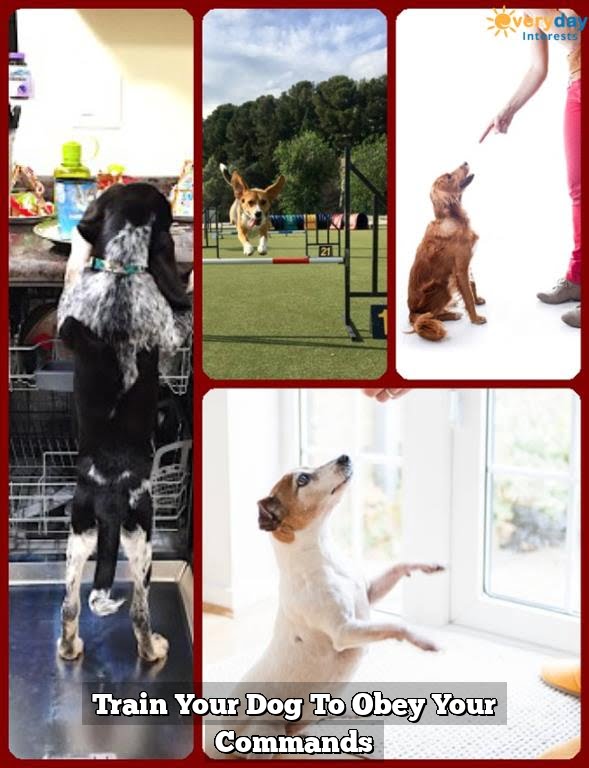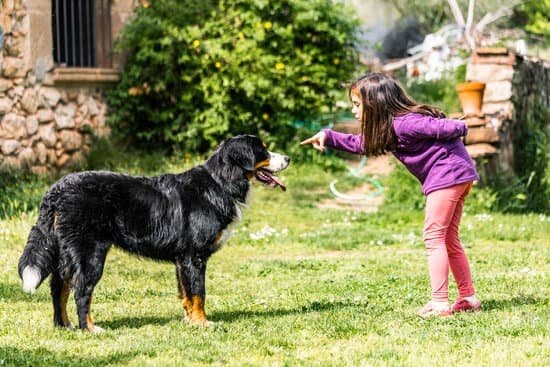Training your dog in simple commands can make a world of difference in your relationship with your furry friend. From sit to stay to come and down, teaching your dog these basic commands is essential for their safety, your sanity, and their overall behavior. In this article, we will explore the importance of training, the different methods available, the basic commands every dog should know, and the keys to successful training.
When it comes to training your dog, understanding the importance of it cannot be overstated. Training not only helps keep your dog safe and well-behaved but also strengthens the bond between you and your pet. It’s an investment in a harmonious and fulfilling relationship that will benefit both you and your four-legged companion.
Choosing the right training method is crucial for effective learning. Positive reinforcement versus traditional training methods is a key decision to make when starting your dog’s education. It sets the tone for how they will respond to commands and behave in various situations. In the following sections, we will delve into these topics as well as establishing leadership, timing and consistency in training, using treats effectively, troubleshooting common challenges, and the role of patience and persistence in achieving success.
Choosing the Right Training Method
When it comes to training your dog on simple commands, choosing the right training method is crucial for success. There are two primary methods commonly used: positive reinforcement and traditional training. Each has its own benefits and drawbacks, so it’s important to understand the differences before deciding which approach to take.
Positive reinforcement training focuses on rewarding your dog for good behavior with treats, praise, or toys. This method emphasizes teaching dogs what to do rather than punishing them for bad behavior. It is based on the principle that dogs will repeat actions that result in positive outcomes. On the other hand, traditional training typically includes using corrective measures such as leash corrections or choke chains to discourage undesirable behavior.
Here are some key points to consider when choosing between positive reinforcement and traditional training:
- Positive Reinforcement
- Emphasizes rewards for good behavior
- Builds a strong bond between you and your dog
- Effective in teaching basic commands such as sit, stay, come, and down
- Traditional Training
- Relies on correction-based methods
- Can lead to fear or anxiety in some dogs
- May not be as effective in building a strong bond with your dog
It’s important to keep in mind that each dog is unique, and what works for one may not work for another. Consider your dog’s personality, temperament, and response to different training methods before making a decision on how to train dogs simple commands.
Basic Commands Every Dog Should Know
Teaching Your Dog to Sit
One of the most essential basic commands that every dog should know is “sit.” Teaching your dog to sit is a fundamental part of obedience training and can be a building block for other commands. To train your dog to sit, start with a treat in your hand and hold it close to your dog’s nose.
Slowly lift the treat upwards which will cause your dog to lower into a sitting position. Once your dog is in the sitting position, praise them and give them the treat.
Training Your Dog to Stay
If your dog stays in place for a few seconds, reward them with a treat and praise. Gradually increase the distance and duration of “stay” as your dog becomes more comfortable with the command.
Teaching Your Dog to Come
The “come” command is crucial for calling your dog back to you in potentially dangerous situations or simply when it’s time to go inside. To train this command, start by getting down on their level and using an excited tone of voice while saying “come.” You can also use treats or toys as motivation for your dog to come towards you. When they respond correctly, make sure to reward them generously and provide plenty of praise.
By following these steps and being patient and consistent with training, you’ll be on your way towards teaching your furry friend these essential basic commands. Remember that every dog learns at their own pace, so it’s important to be understanding and encouraging throughout the process.
Establishing Leadership
One way to establish leadership is through consistent and assertive behavior. Dogs need to know that you are confident and in control in order to trust and respect you as their leader. This can be achieved through setting clear rules and boundaries, being firm but fair, and providing positive reinforcement when they obey commands.
Another important aspect of establishing leadership is ensuring that your dog understands their place in the hierarchy. This can be done by controlling their access to resources such as food, toys, and attention. By making sure that your dog has to earn these things through good behavior, you are reinforcing your position as the leader.
In addition to these methods, it’s also crucial to show love and affection to your furry companion. Building a loving and trusting relationship with your dog is key to effective training. With patience, consistency, and understanding, you will find that establishing leadership will make the process of teaching simple commands much smoother not only for you but also for your beloved pet.
| Establishing Leadership Methods | Benefits |
|---|---|
| Consistent and assertive behavior | Dogs trust and respect you as their leader |
| Controlling access to resources | Earn respect as the leader of the pack |
Learning the Right Timing and Consistency in Training
When it comes to training your dog, timing and consistency are crucial factors in achieving success. Training your dog simple commands requires you to be attentive to the right moments and to maintain a consistent approach. Here’s how to train dogs simple commands while focusing on timing and consistency:
- Timing: Timing is everything when training a dog. It’s important to give the command at the exact moment you want the behavior to occur. For example, if you want your dog to sit, say the command “sit” as soon as their bottom hits the ground. This helps your dog associate the action with the command.
- Consistency: Consistency in training means using the same commands, gestures, and rewards every time you train your dog. This helps your dog understand what is expected of them and reinforces good behavior. If different family members use different cues for the same command, it can confuse the dog and hinder their progress.
In addition, consistency extends beyond just using the same cues – it also involves being consistent in your expectations and reactions. If you allow your dog on the couch one day but not the next, they will become confused about what is allowed behavior.
Remember that dogs thrive on routine and clear communication, so ensuring timing and consistency in your training approach will lead to better results in teaching them simple commands.
Lastly, it’s important to keep in mind that all dogs learn at their own pace – some may pick up commands quickly while others may take longer – patience and persistence are key components when teaching your pup new tricks. Working with your furry friend regularly, being patient with their progress, while ensureing you hand out enough positive encouragement will amplify their ability to learn basic commands like sit or stay in no time.
Using Treats and Rewards Effectively
Choosing the Right Treats
When it comes to using treats for training, not all snacks are created equal. It’s important to choose treats that are both delicious and nutritious for your furry friend. Avoiding treats with high sugar content is key to preventing health issues such as obesity or dental problems. Instead, opt for small pieces of lean meats, vegetables, or specially formulated dog training treats that are low in calories but high in taste.
Timing Is Everything
One of the most crucial aspects of using treats effectively in dog training is timing. It’s essential to give the treat within a few seconds of the desired behavior occurring, so your dog can make a clear connection between their actions and the reward they receive. This immediacy reinforces the behavior you want to encourage and helps your pup understand what they’re being praised for.
Gradually Fading Out Treats
While treats are an excellent tool for teaching new commands, it’s important to start phasing them out once your dog has mastered a skill. You can do this by gradually reducing the frequency of treat rewards while still praising and petting your dog for following commands correctly. This helps prevent over-reliance on food rewards and ensures that your dog listens even when there’s no visible incentive.
By understanding how to train dogs simple commands with treats and rewards effectively, you can build a strong bond with your pet while helping them become well-behaved companions. With the right approach and consistent practice, you’ll soon find that positive reinforcement using treats leads to better obedience and a happier, healthier relationship with your canine pal.
Troubleshooting Common Training Challenges
Training a dog to understand and follow simple commands is an essential part of being a responsible pet owner. Whether you have a new puppy or an older dog, basic obedience training can help create a strong and trusting bond between you and your furry friend. However, it’s common to encounter challenges when teaching your dog simple commands, especially when dealing with distractions, fear, or aggression.
When it comes to distractions, it’s important to start training in a quiet and familiar environment before slowly introducing more stimulating surroundings. Start by practicing the commands in your home or backyard before moving on to places with more distractions, such as the park or a busy street. Consistency is key; make sure to practice the commands at different times of the day and in various locations.
Dealing with fear or aggression during training can be more challenging. If your dog is displaying fearful or aggressive behavior during training sessions, it’s crucial to approach the situation with patience and understanding. Seek professional help if you feel that your dog’s behavior is beyond your ability to handle. Always keep safety in mind for both yourself and your pet.
Using positive reinforcement methods can be extremely effective in helping dogs overcome their fears and insecurities while learning simple commands. Providing treats, praise, and rewards when they successfully follow a command can help build their confidence and trust in you as their trainer. Remember that every dog is unique, so it may take time to find the right approach that works best for your furry companion.
| Challenges | Solutions |
|---|---|
| Distractions | Start training in a quiet environment before introducing more stimulating surroundings gradually. |
| Fear or Aggression | Approach with patience and seek professional help if necessary. Use positive reinforcement methods. |
The Role of Patience and Persistence in Training
In conclusion, training your dog to follow simple commands is an essential part of responsible pet ownership. By teaching your furry friend basic obedience, you are not only keeping them safe but also strengthening the bond between you and your pet. Choosing the right training method, such as positive reinforcement, can make the process more enjoyable for both you and your dog.
Establishing leadership within the household is crucial in successful dog training. By consistently enforcing rules and boundaries, you are helping your dog understand their place within the family unit. It’s important to remember that training takes time and patience. Setting realistic expectations for progress will help you stay motivated and committed to the process.
Ultimately, learning how to train dogs simple commands requires dedication and a positive attitude. Whether it’s teaching them to sit or come when called, using treats and rewards effectively can reinforce good behavior. Remember that every dog learns at their own pace, and it’s essential to be patient and persistent throughout the training process. With commitment and consistency, you can have a well-behaved and obedient companion by your side.
Frequently Asked Questions
What Are the 7 Basic Dog Commands?
The 7 basic dog commands are: sit, stay, come, down, heel, no, and leave it. These commands are essential for training a well-behaved and obedient dog.
How Do You Train a Dog With Simple Commands?
To train a dog with simple commands, consistency is key. Use positive reinforcement such as treats or praise when the dog follows the command correctly. Keep training sessions short and frequent to reinforce learning.
What Are the Top 5 Basic Dog Commands?
The top 5 basic dog commands are: sit, stay, come, heel, and down. These commands form the foundation for good behavior and control in a variety of situations, making them crucial for every dog to learn.

Welcome to the blog! I am a professional dog trainer and have been working with dogs for many years. In this blog, I will be discussing various topics related to dog training, including tips, tricks, and advice. I hope you find this information helpful and informative. Thanks for reading!





